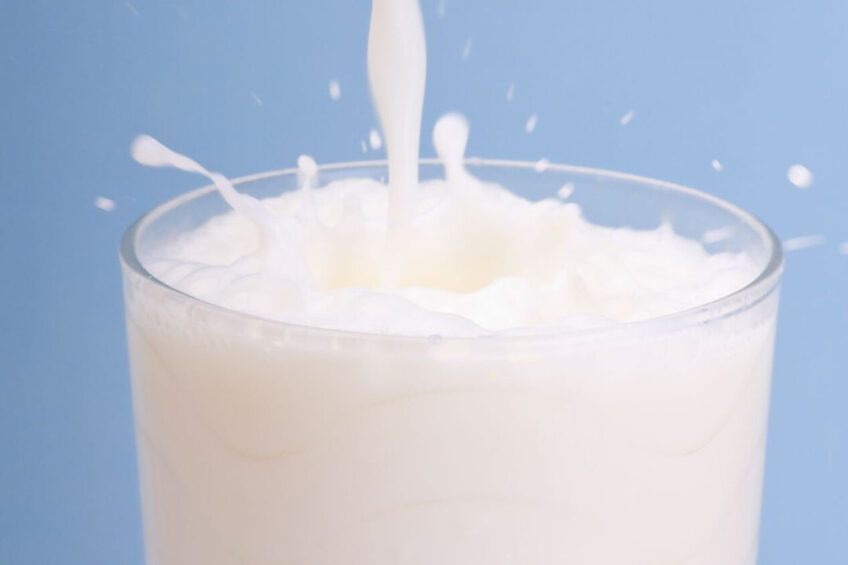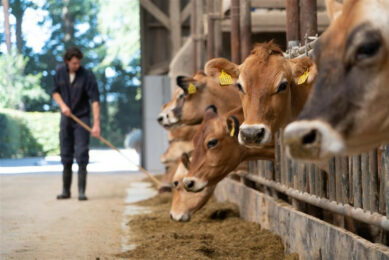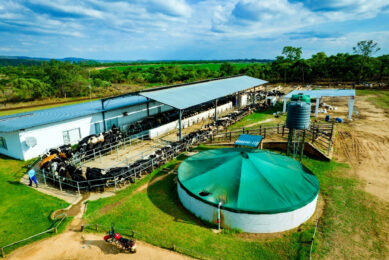Zimbabwe: Milk production records a significant rise

A former breadbasket of Africa, Zimbabwe is leaping towards self-sufficiency in raw milk production according to the country’s Lands, Agriculture, Fisheries, Water and Rural Development permanent secretary, Dr John Basera.
Recent reports in the country’s main news outlets, the Sunday Mail and Herald state that raw milk production in Zimbabwe has increased from 79.6 million litres in 2021 to 91.6 million litres in 2022, which is a rise of 14.3%. Basera told the newspaper that imports of milk powder have declined by 17% over this period, dropping from 8.9 million kg to 7.4 million kg.
Programmes promoting milk production
Basera ascribed the increased production to interventions made by the Zimbabwean government, the private sector, and development partners. “All these interventions and touch points are contained in the Livestock Recovery and Growth Plan, with deliberate programmes focusing on increasing the national dairy herd from 19,000 in 2021 to 29,000 in 2022. This includes the state’s dairy heifer programme funded through the private sector,” he said.
Through the initiative of Transforming Zimbabwe’s Dairy Value Chain for the Future (TranZDVC), the country imported 200 in-calf heifers from the Eastern Cape in South Africa in February 2020 to improve the genetic base of Zimbabwe’s dairy cattle. The animals were distributed to various regions throughout the country through a heifer matching facility spearheaded by three organisations, namely DenDairy, Nestle Zimbabwe, and ProDairy.
Dairy producers are also supported under the Command Silage Programme facilitated by the Agricultural Finance Corporation and CBZ Bank of Zimbabwe. Similarly, the Presidential Silage Programme supports more than 1,500 smallholder dairy farmers with a standard input package comprising maize seed, basal fertiliser, and top-dressing fertiliser for one hectare of silage.
“Silage is a highly nutritious and affordable feed option which the government is promoting under the ‘own farm feed formulation’ programme that started in 2021,” Basera added.
International sponsorship
Under the Zimbabwe Agricultural Growth Programme (ZAGP) funded by the European Union, the TranZDVC aims to address the root causes of under-performance in the dairy value chain in Zimbabwe by strengthening the linkages between production, processing, and financing. Along with that, We Effect (formerly called Swedish Cooperative Center), in partnership with the Zimbabwe Association of Dairy Farmers, Zimbabwe Farmers Union, and Zimbabwe Dairy Industry Trust, seek to improve the economic, social and environmental performance of the dairy value chain by creating an enabling environment for a sustainable and inclusive dairy sector.
As explained by the TranZDVC project coordinator, Dr Edson Chifamba, the key changes being aimed for include increased milk productivity, increased production (dairy breed improvement), increased profitability (improving milk quality and adoption of low-cost renewable energy sources) and improved access to finance by promoting the establishment of multilateral partnerships that leverage investments in dairy productive assets and infrastructure. Under the scheme, work will be undertaken by public and private sectors, NGOs, government service departments, processors, and input suppliers.
Developing a sustainable dairy value chain
In a recent study published in the journal Frontiers in Sustainable Food Systems, researchers identified some key constraints to the development of a sustainable dairy value chain in Zimbabwe.
The lack of infrastructure, technologies and adequate management affects milk quantity and quality, the latter being a major bottleneck for milk processing. At the farm level, low milk yields and calving rates, late age at first calving and long calving intervals prevail and are directly related to nutritional aspects, while the use of inappropriate breeds, poor farm management, limited disease control and poor extension negatively impacts the dairy industry.
In their view, the dairy sector requires strategic investments along the value chain to achieve its full potential; investments that include cooling facilities, milking machines, and road and transportation infrastructure.
Another issue highlighted is gender inequality. “Gender roles are based on dynamic cultural beliefs for which the pace of change is determined by increased awareness and incentives. Thus, targeted social awareness campaigns, combined with appropriate policies and incentive mechanisms, can harness the perspectives and capacities of men, women, and youth to improve value chain performance and gender equity,” they said.
According to an SNV report, productive inputs are expensive in Zimbabwe, affecting the dairy value chain. For example, both the purchase of heifers and on-farm breeding are costly, forage seeds are often unavailable, and electricity is expensive and frequently disrupted, promoting the use of less efficient and more expensive energy sources for production and processing.
2030 target for the dairy sector
The researchers concluded that increased productivity in the dairy sector could return Zimbabwe to being a net exporter of dairy products and contribute toward meeting the national goal of transforming the nation into a middle-income country by 2030.
“In our opinion, to sustainably solve challenges along the dairy value chain, more attention should be placed on the underperforming smallholder and medium-scale dairy farmers and supporting value-chain interventions that creatively balance investments, livelihoods, and profits within the local context,” they said.
Join 13,000+ subscribers
Subscribe to our newsletter to stay updated about all the need-to-know content in the dairy sector, two times a week.










